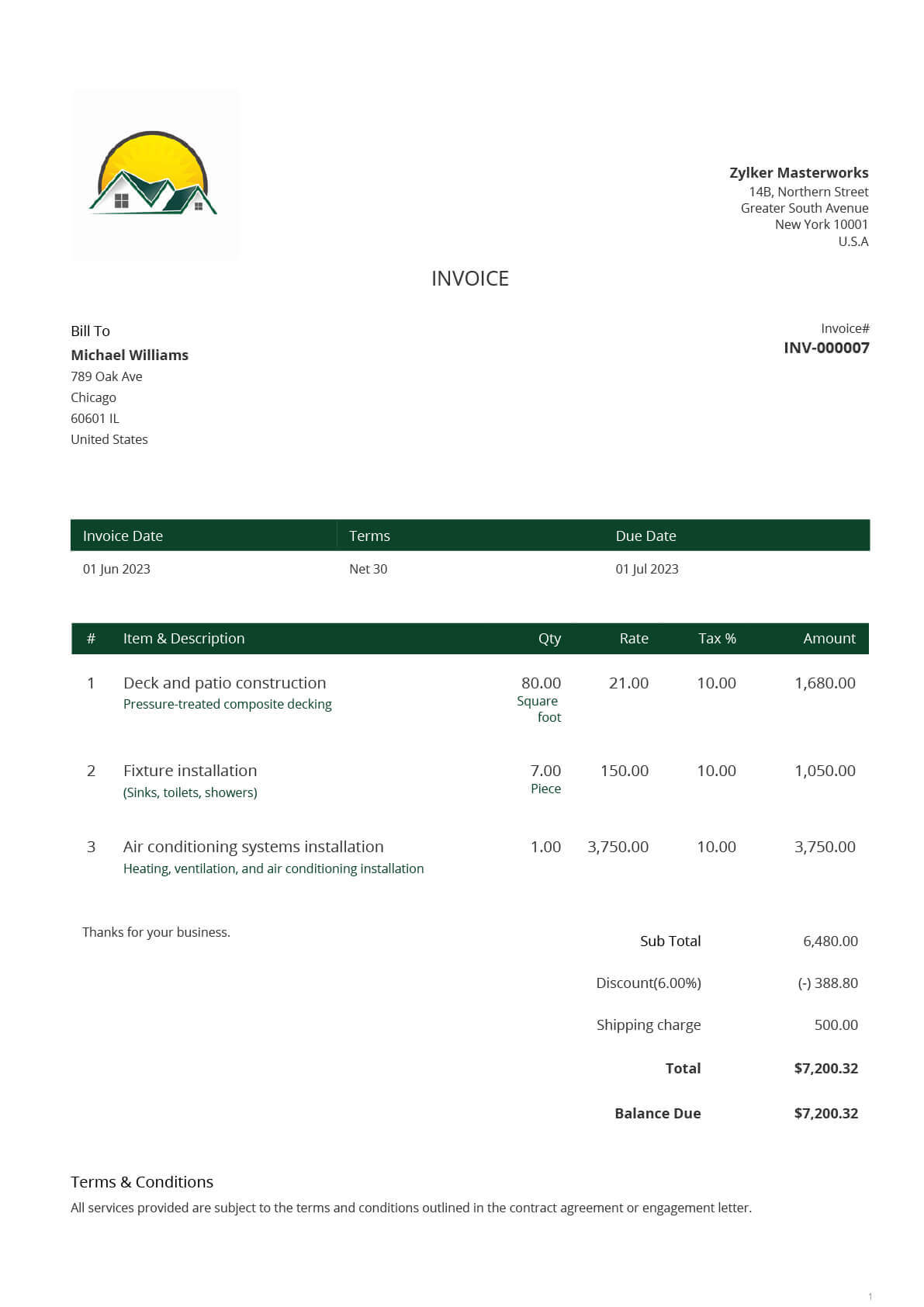Construction billing is a crucial aspect of any construction project. It involves creating accurate invoices that clearly outline the work completed, materials used, and corresponding costs. A well-formatted invoice not only ensures timely payment but also helps to maintain strong relationships with clients.
Key Components of a Construction Invoice
1. Project Information:

Image Source: zoho.com
2. Itemized Details:
3. Tax Information:
4. Total Amount Due:
5. Payment Terms:
6. Additional Notes:
Tips for Effective Construction Billing
Use clear and concise language. Avoid technical jargon that may confuse clients.
Conclusion
By following these guidelines and creating well-structured invoices, construction businesses can improve their cash flow, strengthen client relationships, and enhance their overall financial health. Effective construction billing is a key component of successful project management.
FAQs
1. What is the best software for creating construction invoices? There are many options available, including QuickBooks, FreshBooks, and Zoho Invoice.
2. How often should I send invoices to my clients? The frequency of invoicing depends on the terms of your contract. Typically, invoices are sent monthly or upon completion of specific milestones.
3. Can I include a late fee on my invoices? Yes, you can include a late fee if it is specified in your contract. However, it is important to communicate this policy clearly to your clients.
4. What should I do if a client disputes an invoice? If a client disputes an invoice, it is important to address their concerns promptly and professionally. Review the disputed items and provide any necessary documentation to support your claims.
5. How can I improve my construction billing process? Consider using a billing template, automating certain tasks, and regularly reviewing your billing practices for efficiency and accuracy.
Construction Billing Format







